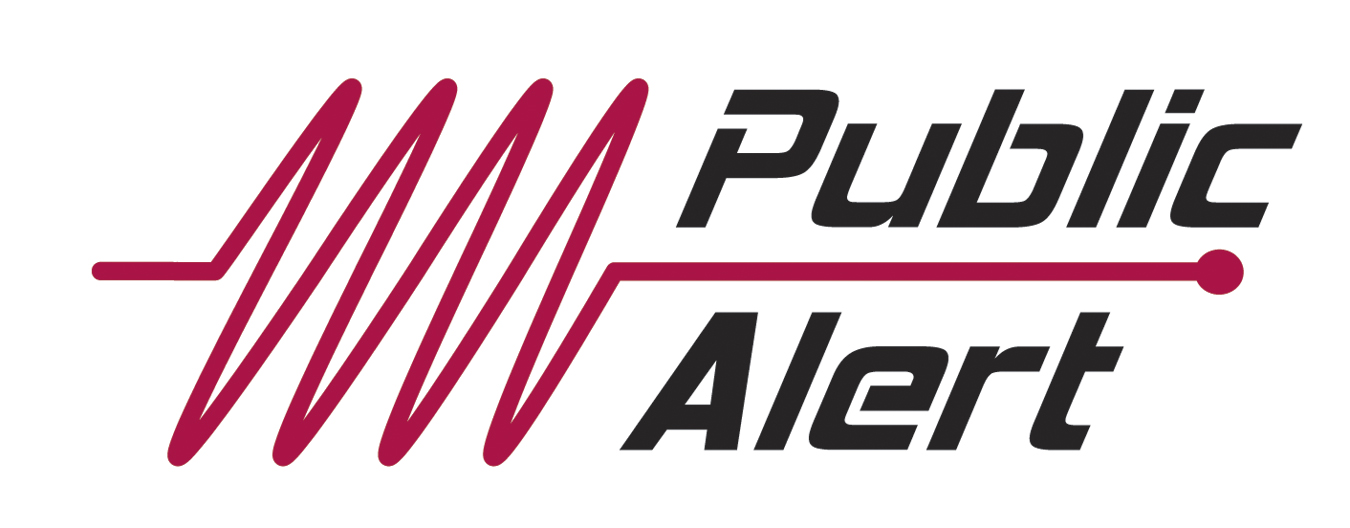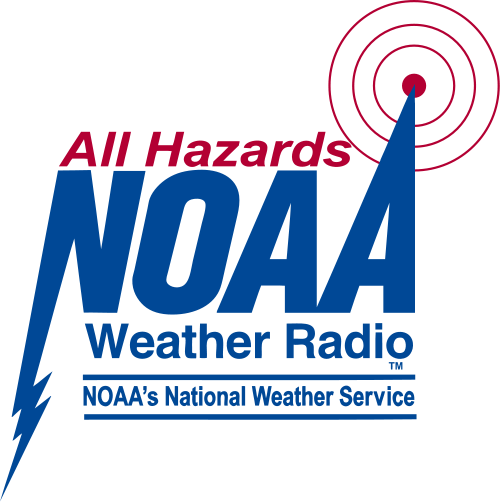General Information
What is NOAA Weather Radio?
NOAA Weather Radio All Hazards (NWR) is a nationwide network of radio stations broadcasting continuous weather information directly from the nearest National Weather Service office. NWR broadcasts official Weather Service warnings, watches, forecasts and other hazard information 24 hours a day, 7 days a week.
Working with the Federal Communication Commission's Emergency Alert System, NWR is an "All Hazards" radio network, making it your single source for comprehensive weather and emergency information. In conjunction with federal, state, and local emergency managers and other public officials, NWR also broadcasts warning and post-event information for all types of hazards, including natural (such as earthquakes or avalanches), environmental (such as chemical releases or oil spills), and public safety (such as AMBER alerts or 911 Telephone outages). NWR is the only federally operated system that broadcasts weather and emergency warnings to the public.
How much of the country is covered by NOAA Weather Radio?
The NOAA Weather Radio network includes over 1000 transmitters that serve an estimated 97% of the U.S. population in all 50 states, Puerto Rico, the U.S. Virgin Islands, the U.S. Pacific Territories. Adjacent coastal waters are also covered by NWR.
How can I listen to NOAA Weather Radio?
NOAA Weather Radio broadcasts in the VHF public service band, so you will need a special radio receiver or scanner capable of picking up the signal.
On what frequencies does NOAA Weather Radio operate?
NOAA Weather Radio broadcasts on seven different frequencies on the VHF public service band: 162.400; 162.425; 162.450; 162.475; 162.500; 162.525; and 162.550 megahertz (MHz).
What is the typical broadcast range of a NOAA Weather Radio transmitter?
The normal broadcast range of a full-power transmitter (1000 watts) over level terrain is approximately 40 miles. The effective range depends on terrain, height and power of the transmitting antenna, quality of your receiver, and whether you use an indoor or outdoor antenna.
On what transmitters does NWS Wilmington, Ohio broadcast?
The National Weather Service office in Wilmington, Ohio is responsible for 9 transmitters that serve its 52 counties spanning parts of Ohio, Indiana, and Kentucky. These transmitters include: Cridersville (Lima), OH; Miamisburg (Dayton), OH; Columbus, OH; Chillicothe, OH; Otway, OH; Richmond, IN; Covington, KY(Cincinnati); Maysville, KY; and Owenton, KY. Click the "Transmitters" button above for local transmitter broadcast coverage maps and frequencies.
I will be traveling to another part of the country. How can I check NOAA Weather Radio coverage in that area?
The National Weather Service
has maps of NOAA Weather Radio coverage by state.
I will be traveling to Canada. Will my NOAA Weather Radio receiver work there?
Yes, it should.
Weatheradio Canada broadcasts weather and environmental information 24 hours a day in English and French to over 90% of Canada on the same seven frequencies as NOAA Weather Radio (162.400 to 162.550 MHz).
Receiver and Reception Information
Where can I purchase a NOAA Weather Radio receiver?
While the NWS produces NOAA Weather Radio broadcasts, the NWS neither manufactures nor sells NWR receivers. You can purchase NWR receivers in a variety of sizes, styles, and prices either online or at many retail outlets such as electronics, department, sporting goods, and marine stores.
How much does a NOAA Weather Radio receiver cost?
NOAA Weather Radio receivers range in cost from around $20 to over $100, depending on the quality of the receiver and the features it has.
What types of NOAA Weather Radio receivers are available?
NOAA Weather Radio receivers come in many sizes and with a variety of functions. Depending on the information you desire and how/where you want to access our broadcasts, you have many options. Most NOAA Weather Radio receivers are either battery-operated portables or AC-powered desktop models with battery backup. There are standalone receivers that are simply used for NOAA Weather Radio, and there are also multi-band/function receivers with additional features and frequency bands (e.g. AM/FM radio).
What trademarks/features should I look for in a NOAA Weather Radio receiver?
| We cannot recommend one brand of receiver over another, but we do recommend users look for receivers with the Public Alert™ and NOAA Weather Radio (NWR) All Hazards logos. The Public Alert Standard was developed by the Consumer Electronics Association in conjunction with NWS. Devices with the Public Alert™ logo meet certain technical standards and come with many, if not all, of the features detailed below. Devices with the NOAA Weather Radio All Hazards logo have been evaluated by the NWS for user friendliness and performance capabilities. Desirable features to look for in a NOAA Weather Radio include: |
 |
 |
- Tone Alarm: Most warnings and many watch messages are broadcast with a tone alarm, which will activate receivers equipped to receive it, even if the radio is in a muted standby mode. This feature is especially useful for receiving warnings during the night.
- SAME Technology: Specific Alert Message Encoding (SAME) allows you to specify the particular area for which you wish to receive alerts. Most NWR transmitters broadcast for a number of counties, but SAME receivers will only respond to alerts issued for the particular county (or counties) you have pre-selected and programmed.
- Selectable Alerting: Some receivers allow you to turn off alarms for certain events which might not be important to you.
- Battery Backup: Since power outages often occur during storms, having a receiver with battery backup can be crucial. Look for radios with an AC adapter as well as a battery compartment.
- External Antenna Jack: While most receivers come with a whip antenna, depending on your location you may need an external antenna for good reception. Some receivers come with an external antenna jack, allowing the unit to be connected to a larger indoor or outdoor antenna.
- External Notification Device Jack: Those with special needs may want to look for a receiver that can accommodate external notification devices, such as strobe lights or bed shakers. A strobe light connection would also be useful in noisy production facilities to alert personnel of a warning.
Are there special receivers for the hearing or visually impaired?
The hearing and visually impaired can receive warning alarms by connecting a specially designed weather radio to other kinds of attention-getting devices like strobe lights or bed shakers. For more information on receivers for those with special needs, visit
this site and
this site.
Why does the quality of the signal vary so much from place to place or over time?
While the typical range for NOAA Weather Radio reception is about 40 miles from the transmitter, as with many VHF broadcasts, reception can vary depending on atmospheric conditions. The variation is more noticeable near the fringe of the transmitter's coverage area.
Many things can affect reception. Forests and hills/mountains tend to greatly reduce reception. Reception in cities may be reduced due to steel and concrete. Reception can vary from room to room. Mineral deposits in the ground can affect your radio signal. Moving even a few feet can change a weak signal to a stronger one.
It may help to place the receiver near a window facing the direction of the transmitter, away from other electronic equipment, and on an upper level of a house or office building. You may need to get a receiver with a good quality internal antenna or connect your receiver to an external antenna.
Generally, the least expensive receiver models will be most susceptible to reception problems. Many models have a connection for an external antenna. You can buy an external antenna from an electronics store or tap into your television antenna.
Tone and Alarm Information
I just purchased a NOAA Weather Radio with the SAME feature. Where can I get the geographic code(s) I need to program my receiver?
Click the "SAME Codes" button in the main menu above for any counties served by our 9 transmitters. You can also visit
this site or call 1-888-NWR-SAME to get the SAME codes for any area in the country.
I live in one county and work in another (or I live near the county line). Can I program more than one geographic SAME code into my NOAA Weather Radio receiver?
Yes, most newer NOAA Weather Radio receivers allow for multiple SAME codes to be entered. It is a good idea (especially if you live near a county line) to program SAME codes in for not only your county but also for any adjacent upstream counties so you know what is heading your direction.
How can I test my SAME radio to make sure that it is programmed properly?
Every NWS office schedules a weekly test for each of its Weather Radio transmitters. Our tests are normally conducted each Wednesday between 11 AM and noon local time. Click the "Weekly Test" button in the main menu above for more details.
What products will activate the alarm on my NOAA Weather Radio receiver?
Please click on the "Broadcast" button in the main menu above for a list of what products will activate the alarm on your receiver.
Will NOAA Weather Radio warn me of terrorist attacks or other non-weather emergencies?
NOAA Weather Radio is considered an "All-Hazards" public warning system and will alert the listening public to non-weather emergencies, but ONLY when requested by the appropriate state or local officials. These include technological accidents (e.g., chemical releases, oil spills, nuclear power plant emergencies), AMBER alerts for abducted children, and terrorist attacks.







